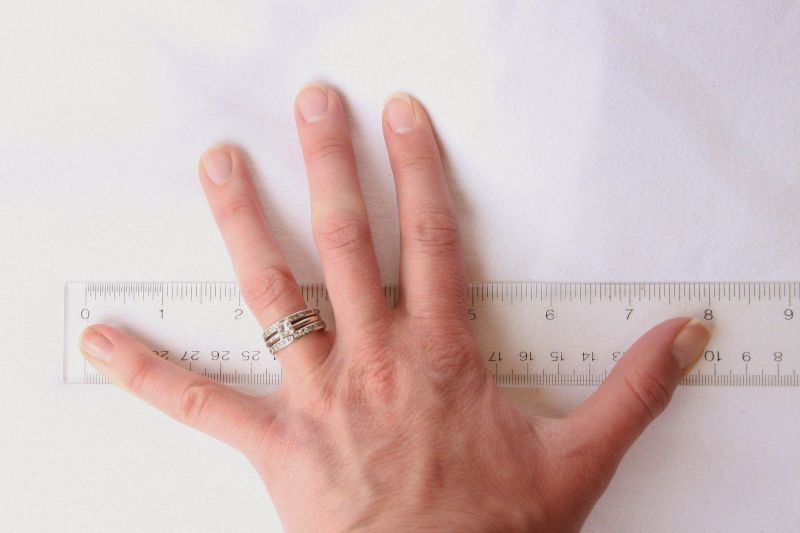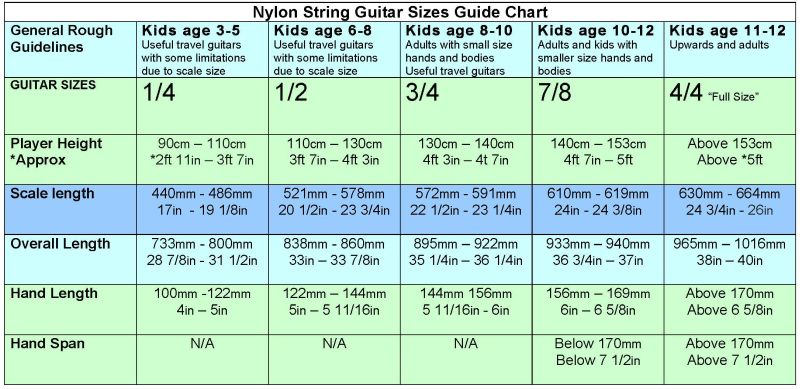Guitar Scale Length:
Definition, Impact, and Choosing the Right Size

"Douglas who?"
Douglas Niedt is a successful concert and recording artist and highly respected master classical guitar teacher with 50 years of teaching experience. He is Associate Professor of Music (retired), at the Conservatory of Music and Dance, University of Missouri-Kansas City and a Fellow of the Henry W. Bloch School of Management—Regnier Institute for Entrepreneurship and Innovation.
Doug studied with such diverse masters as Andrés Segovia, Pepe Romero, Christopher Parkening, Narciso Yepes, Oscar Ghiglia, and Jorge Morel. Therefore, Doug provides solutions for you from a variety of perspectives and schools of thought.
He gives accurate, reliable advice that has been tested in performance on the concert stage that will work for you at home.
PURCHASE AN ALL-ACCESS PASS
TO THE VAULT OF CLASSICAL GUITAR TECHNIQUE TIPS

"Hello Mr Niedt,
My name's Gretchen, and I'm so happy I purchased an All-Access Pass to the Vault. I love your awesome technique tips. I'm amazed how much I have improved my playing.
Thank you!"
ARE YOU LOOKING FOR PROVEN STRATEGIES
THAT WILL MAKE YOU A BETTER GUITARIST?
Check out the game-changing tips in my Vault—I promise they will kick your playing up to the next level.
Purchase an All-Access Pass to the Vault.
It's a one-time purchase of only $36!
You receive full access to:
- Over 180 technique tips in The Vault.
- Special arrangements of Christmas music
- Arrangement of the beautiful Celtic song, Skellig
- Comprehensive guide, How to Master the Classical Guitar Tremolo
All that for a one-time payment of only $36. Take me to the page to Purchase an All-Access Pass
Guitar Scale Length:
Definition, Impact, and Choosing the Right Size
By Douglas Niedt
Copyright Douglas Niedt. All Rights Reserved.
This article may be reprinted, but please be considerate and give credit to Douglas Niedt.
WHAT IS SCALE LENGTH
The simplistic definition of scale length is the distance between a guitar’s nut and its bridge saddle or what some call its vibrating string length. But in the case of the guitar, that is not exactly correct.
For example, if the nominal scale length is 650 mm, guitar makers increase the distance from the nut to the bridge saddle by a small amount to more than 650 mm. Increasing the distance lengthens the vibrating length of the strings to improve the intonation of the fretted notes. When pressing a string down to the fret, the guitarist bends the string towards the fretboard, which slightly raises or sharpens its pitch. Lengthening the string slightly flattens the pitches, compensating for the sharpening of the notes that occurs when pressing the string down to the fret wire. The amount of compensation also varies from string to string depending on each string’s gauge and weight.
Therefore, guitars have “bridge saddle compensation,” and the compensation varies from string to string. Furthermore, some luthiers add a slight amount of compensation to the nut end of the string length. The commonplace nut-to-bridge-saddle-compensation and sometimes nut compensation are why you cannot correctly define the scale length as the distance between the nut and the bridge saddle. The vibrating length of each string is different due to the compensation.
Instead, we can properly define scale length as the distance from the nut (where it butts against the end of the fretboard) to the center of the 12th fret wire multiplied by two.
HOW DO I DETERMINE THE SCALE LENGTH OF A GUITAR?
To determine the scale length of a modern guitar (without nut compensation), measure the distance from the front edge of the nut (where it butts against the end of the fretboard) to the center of the 12th fret wire. Double the measurement, and that is the scale length of the guitar. This method negates the effects of nut-to-bridge-saddle compensation.
HOW LONG IS THE SCALE LENGTH OF A CLASSICAL GUITAR?
In the classical guitar world today, a scale length of 650 mm is the norm. Luthiers also make short-scale guitars with a 640 mm scale length. In the 1960s, 70s, and 80s, many Spanish guitars had a 660 mm string length. Ramirez guitars had a 664 mm or 665 mm string length. Some guitar makers, such as José Ramirez, thought that a longer scale length combined with other innovations would make the guitar louder and more powerful. There are many beautiful-sounding guitars with long scale lengths, but many guitarists find them hard to play.
DOES SCALE LENGTH MATTER?
Scale length is only one of many factors to consider when shopping for a guitar.
Playability and Guitar Scale Length
Scale length influences the overall feel and playability of a guitar.
- A longer scale length means a longer string, and the longer the string, the more it weighs.
- A shorter scale length uses a shorter string, which will not weigh as much as the longer string.
- A longer, heavier string requires more tension to bring it up to pitch than a shorter, lighter string.
Some players can feel the difference between a long-scale guitar’s stiffer tension and a short-scale guitar’s looser tension. They feel a difference in pressing the strings down with the left hand and also how hard they can play with the right hand (the right hand can play more aggressively on a long-scale guitar).
However, the choice of string (whether low, medium, or high tension) also affects what we perceive as playability and may supersede the effect of scale length.
As scale length increases, so does the distance between the frets. Players will feel the difference between a standard 650 mm scale length and the 664 mm or 665 mm scale length of a long-scale guitar such as a Ramirez guitar from the 1960s, 1970s, and 1980s.
On a shorter scale, the frets are closer together, making stretches and complex chord shapes potentially easier to execute for many players. Longer scales increase the distance between frets, requiring more significant hand movement and stretch to cover the same musical intervals. Therefore, shorter-scale guitars might lessen the chance of left-hand injury. If stretches are easier, navigating the fretboard will generally feel more effortless, and the player will feel more relaxed and comfortable overall.
Differences in the Sound of Different Guitar Scale Lengths
Some guitarists maintain that longer scale lengths deliver a richer low end due to the increased mass and energy of the lower frequency waves produced by the larger vibrating area of the strings.
They may also exhibit enhanced clarity and separation between notes, especially in the treble range. Guitars with shorter scale lengths often provide warmth and sweetness in the midrange frequencies but may lack some of the depth in the bass register found in longer-scaled models.
While some luthiers discount it, some players find a relationship between scale length and string sustain:
- String tension: Longer scale lengths increase string tension. Higher tension typically results in longer sustain, as the strings have more potential energy to continue vibrating.
- Bridge pressure: The increased tension of longer scales creates more downward pressure on the bridge. This pressure can improve the transfer of string vibrations to the guitar body, potentially enhancing sustain.
- Harmonic content: Longer scales produce more complex overtones, contributing to a perception of longer sustain. These harmonics decay at different rates, creating a more layered and prolonged sound.
However, others say factors such as choice of woods, bracing, design elements, and construction methods far outweigh scale length in determining the guitar’s sound quality, sustain, and volume.
Guitar Body Size and Guitar Scale Length
Many luthiers construct a smaller body for their 640 mm short-scale guitars. Some players say the smaller body or box size feels better in their arms, the right hand can reach its playing position more easily, and their legs do not need to spread apart as much as on a large-body guitar. However, other luthiers make their short-scale 640 mm guitars with normal body sizes. In other words, the size of the guitar body does not have to correlate with the scale length.
SHOULD I BUY A STANDARD SIZE, SHORT SCALE, OR LONG SCALE GUITAR?
When buying a guitar, The SOUND of the guitar should be the number one determining factor, not its action, feel, or scale length. Compared to sound, scale length is relatively unimportant. You will get used to any guitar fairly quickly, assuming the guitar is right for you in terms of general overall size (if you have small hands, do not buy a guitar with a scale length of more than 650 mm) and that the action is within standard, accepted norms.
Standard-Scale Guitars
Note that the 650 mm scale length is standard, so you will find more guitars to choose from in this category.
Long-Scale Guitars
Although long-scale guitars of 660 mm, 664 mm, and 665 mm seem to be out of fashion, this writer believes that many of the long-scale guitars from the great Spanish luthiers of the 1960s and 1970s are outstanding instruments, second to none if you have large hands and can handle them.
Players with large hands may prefer a long-scale guitar with its wider fret spacing.
More About Short-Scale Guitars (640 mm)
Some believe that short-scale length reduces power, volume, and projection. This loss can occur, in theory, because of reduced string tension or reduced body size. However, we can easily increase the string tension by using higher-tension strings. For example, a 640 mm scale guitar strung with hard tension D’addario strings will feel similar to a 650 scale strung with medium tension D’addario strings.
And again, a bigger body size does not necessarily mean more volume. Every design for whatever scale length will have an optimum body size and shape to maximize volume and sound quality.
Luthier Kenny Hill points out, “A shorter string reduces the overall tension of the instrument because, with the shorter length, the string doesn’t have to be pulled as tight to reach pitch. Maybe this is counterintuitive, but this lower tension can allow the top of the guitar to move more freely and produce more sound.”
Hill is a strong advocate of short-scale guitars. He remarks: “There may be a general perception that a 640 is a ‘little’ guitar, or underpowered and weak, but this isn’t necessarily so. Before trying it, I was skeptical, but over the years, some of the best guitars I’ve made have been 640 scale. There tends to be an added warmth, malleability of tone, and cooperative feeling in both right-hand tone production and left-hand facility. And there is no sacrifice of volume. I’ve never had anyone, including outstanding players, comment about any inadequacies in a 640 scale. They just don’t notice. In fact, I’ve seen them in ‘blind tests’ chosen above 650 scales many times.”
As far as sound goes (which is the most crucial element in choosing a guitar), the overall character of the woods, bracing, and other design elements are far more critical to creating a guitar with beautiful tone and volume than scale length. A 650 mm, 660 mm, 664 mm, or 665 mm scale length will not automatically produce more volume or better bass response than a 640 mm scale length.
Will a shorter-scale guitar make you play better? Well, you will not suddenly play like John Williams or Ana Vidovic, but if the guitar is easier to play and you can do stretches more easily, your hands and body will generally be more relaxed. They will be less subject to muscular fatigue, which may improve accuracy.
Another factor many prospective guitar shoppers forget is the distance between the strings at the nut. This distance can be an important factor that players with small hands and thin fingers should consider. Luthier Gregory Byers says, “The normal string spacing at the nut is about 43-44 mm, E to E, center to center. A person with very small hands might benefit from spacing as close as 37 mm. It is usually best to keep string spacing at the saddle unchanged since no matter how small the hands, free-stroke playing requires about the same amount of space between the strings.”
All guitarists, especially guitarists with small hands, should check out 640 mm guitars. Be sure to choose luthiers who are experienced in building shorter-scale guitars. Choose a guitar based on all of its merits, not just scale length or playability.
Do professional guitarists play short-scale guitars?
Many professional classical guitar players play a 640 mm scale guitar:
David Russell plays a 640mm scale guitar made by Matthias Dammann, a German luthier who pioneered the double-top construction.
Sharon Isbin plays a 640mm scale guitar made by Thomas Humphrey, an American luthier who invented the Millennium bracing system and the elevated fingerboard.
Ana Vidovic plays a 640mm scale guitar made by Jim Redgate, an Australian luthier specializing in lattice-braced and double-top guitars.
Pepe Romero and Xuefei Yang also lean towards the shorter 640 mm scale lengths.
A CHART TO MATCH HAND SIZE WITH GUITAR SCALE LENGTH
You can use this chart as a starting point, but you must play guitars of different scale lengths and string-spacing widths to determine the scale length that is most comfortable for you.
To measure the span of your hand, place a ruler on a flat surface. Place your little finger and thumb on the ruler. Place the rest of your hand flat on the surface. Spread the fingers apart as far as you can. Your hand span is the measurement from the tip of the little finger to the tip of the thumb.

Find your hand span measurement in the left column. The recommended scale length is in the middle column. In the right column, 4/4 refers to a full-size guitar. 7/8 refers to the largest child-sized guitar. See the second chart below for recommendations for children.
ADULT HAND SPAN | SCALE LENGTH | GUITAR SIZE |
|---|---|---|
250 mm or greater |
664 mm |
4/4 |
230-250 mm |
656 mm |
4/4 |
210-230 mm |
650 mm |
4/4 |
190-210 mm |
640 mm |
4/4 |
170-190 mm |
630 mm |
4/4 |
Less than 170 mm |
615 mm |
7/8 |
A GUIDE FOR CHILDREN: CLASSICAL GUITAR SIZES

This chart is from playableguitar.com
Most guitar sizing charts for kids are age-based recommendations such as the one above. However, age isn’t always the best determinant of what size guitar will fit your child. Your child’s size best determines what size guitar fits your child!
See this webpage to calculate the proper size guitar for your child.
Finding a guitar that is the right size and scale length for a child is challenging. The child is growing and may be on the line between two guitar-size brackets. They will require a new guitar for each growth stage. Do not buy a guitar that is too large for the child, thinking, “They will grow into it.” Yes, they will, but in the meantime, they will become discouraged because the guitar will be too difficult to play. They also may injure their hand playing a guitar that is too large for them.
DOWNLOAD THE PDF
Download the PDF here: Guitar Scale Length: Definition, Impact, and Choosing the Right Size
